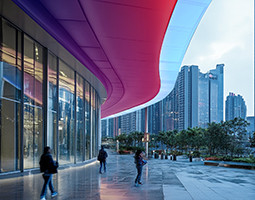October 29, 2021
Rejuvenating leisure travel with a more holistic experience
To rebuild post-pandemic, travel and hospitality businesses need to build an experience ecosystem that encompasses both customers and employees.
Hit hard by COVID-19, the travel and hospitality (T&H) industry rebounded from its deep 2020 trough earlier this year, with both hoteliers and airlines showing significant momentum in revenues and demand over last year’s disastrous levels. However, that leaves industry room revenues and travel demand well below 2019’s pre-pandemic levels.
To recapture business lost to the pandemic, leading brands will need to focus not just on filling airline seats and hotel rooms but also on the entire experience ecosystem, which encompasses travelers, employees and business partners.
We’ve helped clients across industries, including technology companies, create ecosystems that lift the experience for both customers and employees by modernizing systems to a cloud-native architecture; building data-driven capabilities that generate better insights about customer and worker preferences; and using automation and artificial intelligence to improve their support processes.
Blending CX and EX
It’s well understood that satisfied workers can help organizations in myriad ways — reducing turnover and improving customer service, to name two. And the same technology that improves the customer experience can also improve that of everybody across the environment. For example, mobile apps can make it easier for workers to quickly trade shifts, and analytics can predict when an employee may grow restless and consider leaving the company.
Enabling employees to do their jobs better will also impact guests’ perception of the brand. For instance, we know that providing insights about guest preferences to a front-desk worker or concierge makes guests feel special and known. But there’s more to it than that; employee empowerment has a significant associative effect on how they interact with guests.
First things first: hiring and onboarding
In the immediate and near future, of course, the industry will need to focus on operational efficiency — using the tools at hand to rebuild business in the face of an excruciating worker shortage.
With demand ramping up, hiring and training are the bottleneck. Travel and hospitality brands are leaving no stone unturned in their efforts to restaff, including reaching out to former employees and seeking new sources of talent. Hospitality companies are very motivated; you cannot open rooms or fly airplanes unless you can staff them.
However, the training experience itself is not always a good one due to outdated systems. The legacy systems still in use are often siloed and saddled with nonintuitive user interfaces that require specialized knowledge for skilled operation. This is hardly ideal in an industry with high turnover and many digital-native workers for whom tried-and-true last-generation PCs and ways of working are complete non-starters.
Eventually, onboarding and training programs in the industry will evolve as more T&H businesses grasp the importance of improving the employee experience as a way to improve the customer experience.
Emerging ecosystems
Leading T&H brands are already melding guest and employee experiences into an experience ecosystem. Here are a few real-world examples from our engagements:
- We designed an intelligent, cloud-based order management solution with a unified agent view for a $1.8 billion US-based food service client. Agents now have all relevant information on a single screen, which has improved the customer experience by reducing order wait times. According to the client, the project translated into increased revenue of 15% per order, as well as a reduction of up to 50% in the time from receipt of an order until it is delivered.
- We built a mobile check-in solution for a global hotel chain that enables guests to seamlessly choose their room and go straight to it, a significant post-COVID priority. Our guest experience engine framework creates flexible integration points between a mobile app and back-end systems for property management, loyalty and housekeeping.
- We worked with a global hotel chain to improve the algorithms used to set room rates. COVID rendered obsolete the historical comparisons that hotel revenue management algorithms used, frustrating workers tasked with setting rates for individual properties. We designed a data solution that both identifies gaps in the data sets and provides an automated healing process to cleanse the input data used by the algorithm. While this project is still in its early stages, the client says employees can now more effectively set prices, improving morale and maximizing revenue.
T&H brands can realize great value when they use a variety of tools, including technology, to enable great guest and employee experiences. Brands are then better positioned to lure back guests, even as travelers engage in new behaviors, such as local “staycations” and opting to stay in homes rather than hotel rooms. T&H businesses will need better insights, greater flexibility, scale and agility to understand changing guest preferences and launch new capabilities and more relevant services.
T&H companies must consider workers as well as customers when making these changes. Increasingly, there are technology and practices available that can create insights aimed at improving the experience ecosystem in a holistic way. Industry leaders will waste no time in pivoting.
We’re here to offer you practical and unique solutions to today’s most pressing technology challenges. Across industries and markets, get inspired today for success tomorrow.
Latest posts
Related posts
Get actionable business Insights in your inbox
Sign up for the Cognizant newsletter to gain actionable AI advice and real-world business insights delivered to your inbox every month.
















